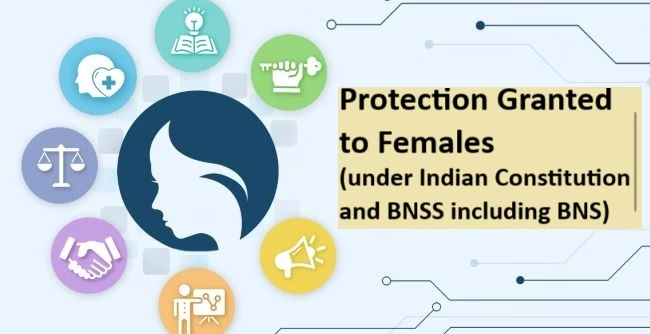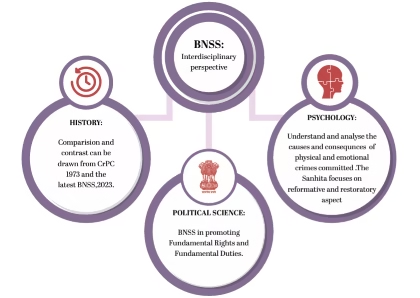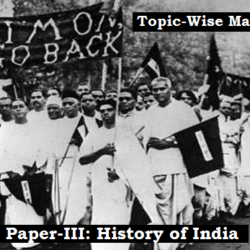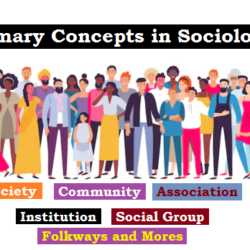
Historically, women have been undergoing socio-economic, educational and political discrimination. Therefore, the Constitutional and legal of India not only protects women from exploitation and discrimination but also promotes social equity and equality for women. State to adopt measures of positive discrimination in favour of women for neutralizing the cumulative disadvantages and discrimination faced by them.
The official statistics show a declining sex-ratio, health status, literacy rate, work participation rate and political participation among women. While on the other hand the spread of social evils like dowry deaths, child marriage, domestic violence, rape, sexual harassment, exploitation of women workers are major issues related to women in India.
Protection Granted under Constitutional Provisions
The Constitution of India not only protects women from exploitation and discrimination but also empowers the State to adopt measures of positive discrimination in favour of women. Following are constitutional privileges which are guaranteed to women in India for their empowerment.
Fundamental Rights
Discrimination:
| Article | Provisions |
| Article 14 | Equality before law |
| Article 15 | The State not to discriminate against any citizen on grounds only of religion, race, caste, sex, place of birth or any of them. Article 15 (3): The State to make any special provision in favour of women and children. |
| Article 16 | Equality of opportunity for all citizens in matters relating to employment or appointment to any office under the State. |
Exploitation:
| Article 23 | Trafficking of human beings and forced labor are prohibited. |
Directive Principles of State Policy (DPSPs)
Opportunity:
| Article | Provisions |
| Article 39(a) | The State to direct its policy towards securing for men and women equally the right to an adequate means of livelihood. |
| Article 39(d) | Equal pay for equal work for both men and women |
Health and Education:
| Article 9A | State to provide free legal aid by suitable legislation. |
| Article 42 | The State to make provision for securing just and humane conditions of work and for maternity relief. |
| Article 46 | The State to promote with special care the educational and economic interests of the weaker sections of the. |
| Article 47 | The State to raise the level of nutrition and the standard of living of its people. |
Fundamental Duties
| Article 51(A) (e) | It shall be the duty of every citizen of India to renounce practices derogatory to the dignity of women. |
Panchayati Raj System (Panchayat and Municipality)
Political Empowerment:
| Article | Provisions |
| Article 243 D(3) | One-third of the total number of seats to be filled by direct election in every Panchayat shall be reserved for women. |
| Article 243 D(4) | Not less than one- third of the total number of offices of Chairpersons in the Panchayats at each level to be reserved for women. |
| Article 243-T(3) | One-third of the total number of seats to be filled by direct election in every Municipality shall be reserved for women. |
| Article 243-T(4) | The offices of chairpersons in the Municipalities shall be reserved for women in such manner as the State Legislature may provide. |
| The Chhattisgarh Panchayat Raj Adhiniyam (1993) |
| 1. One-tenth (1/10th) of the total number of members of the Gram Sabha shall form a quorum for a meeting of Gram Sabha out of which one-third (1/3rd) shall be women members. In Scheduled Areas, according to PESA, the quorum requirement is one-third (1/3rd). 2. Half (1/2nd) of the total number of seats of Sarpanchas, President of Janpad Panchayat and President of Zila Panchayat are reserved for women. In Scheduled Areas, according to PESA, 100 percent seats of Sarpanch are reserved for women. |
Protection Granted under Bharatiya Nyaya Sanhita (BNS) 2023
The Government of India had recently enacted the Bharatiya Nagarik Suraksha Sanhita, (BNSS) 2023. This Sanhita would facilitate in translating the commitment to justice, social, economic and political. Additionally, it would also facilitate in ensuring Equality and Fraternity to all the citizens of
the country. This Sanhita would also help in promoting Fundamental Duties as mentioned in the Constitution of India. It would help in translating the spirit of common brotherhood amongst all the people of India, transcending religious, linguistic and regional or sectional diversities; renouncing
practices derogatory to the dignity of women.


Indian Penal Code (IPC) is replaced with Bharatiya Nyaya Sanhita (BNS) 2023 which criminalizes certain offences derogatory to women and provides for stringent punishment with imprisonment and fine.
| IPC Section | New BNS Section | Provision |
| Section 376 | Section 64 | Punishment for Rape with rigorous imprisonment of 7 years to life imprisonment and with fine. |
| – | Section 69 | Sexual intercourse by employing deceitful means (false promise of employment or promotion, or marrying) etc. |
| Section 228A | Section 72 | Punishment for disclosure of identity of the victim of certain offences |
| Section 354 | Section 74 | Punishment for molestation (assault or criminal force to woman with intent to outrage her modesty) 75-Sexual Harassment; 76-Assault; 77- Voyeurism; 78- Stalking |
| Section 509 | Section 79 | Punishment for sexual harassment (word, gesture or act intended to insult the modesty of a woman) |
| Section 304B | Section 80 | Punishment for Homicide for Dowry, Dowry Deaths or their attempts |
| Section 498A | Section 85 | Punishment for cruelty by husband or his relatives |
| Section 366A | Section 96 | Procuration (induces to go or do any act) of child |
| Section 372/373 | Section 98/99 | Punishment for selling or buying minor for purposes of prostitution, etc. |
| Section 306 | Section 108 | Abetment to commit suicide by women |
| Section 307 | Section 109 | Attempt to murder |
| Section 326 A, B | Section 124 (1), (2) | Punishment for acid attacks with rigorous imprisonment of 10 years to life imprisonment. |
| Section 366 B | Section 141 | punishment for importation of boy*/girl from abroad (boy added) |
| The Criminal Law Amendment Act (2013): The Nirbhaya Act |
| The various provisions added or amended in the Indian Penal Code after the Criminal Amendment 2013 are: 1. Zero FIR: Registration of complaint from any police station (for rape victim or relatives) 2. Time does not matter: in cases of rape or molestation, Police cannot refuse to register an FIR even if a considerable period of time has elapsed since the incident. 3. Protection of identity: Identity of a rape victim cannot be revealed. (IPC 228A) 4. Doctor’s Report is not a conclusive proof: Report of the doctor can only act as a proof. Whether the rape has occurred or not is a legal conclusion and doctor cannot decide on this. The only state that can be made by the medical officer is that there is evidence of recent sexual activity. 5. Employers must protect: It is the duty of every employer to create a Sexual Harassment Complaints Committee within the organization for redressal of such complaints. 6. Acid Attack, stalking and voyeurism also offences: Stalking (following a woman even after her disinterest) (IPC 354D), voyeurism (watching or capturing images of a woman during private acts) (IPC 354C) and Acid Attack (throwing acid on or giving it to her in some way) (IPC 326A) are serious and punishable offences. |
Protection Granted under Bharatiya Nagrik Suraksha Sanhita (BNSS) 2023
The Criminal Procedure Code (CrPC) of India replaced by Bharatiya Nagrik Suraksha Sanhita (BNSS) 2023 lays down the laws and procedures for the investigation, prosecution, and trial of criminal offenses. Though it is not possible to remember various Sections of BNSS, some important Sections which are related to a common man should be kept in mind. Also, the chapter wise details are given here to understand the flow of the law.
| Chapters | Provision | Sections |
| Chapter I | Priliminary | Sec 1 – 5 |
| Chapter II | Constitution of Criminal Courts and Offices | Sec 6 – 20 |
| Chapter III | Power of Courts | Sec 21 – 29 |
| Chapter IV | A- Powers of Superior Officers of Police B- Aid to the Magistrates and the Police | Sec 30 Sec 31 – 34 |
| Chapter V | Arrest of Persons | Sec 35 – 62 |
| Chapter VI | Processes to Compel Appearance | Sec 63 – 93 |
| Chapter VII | Processes to Compel the Production of Things | Sec 94 – 110 |
| Chapter VIII | Reciprocal Arrangements for Assistance in Certain Matters & Procedure for Attachment & Forfeiture of Property | Sec 111 – 124 |
| Chapter IX | Security for Keeping the Peace and for Good Behaviour | Sec 125 – 143 |
| Chapter X | Order for Maintenance of Wives, Children and Parents | Sec 144 – 147 |
| Chapter XI | Maintenance of Public Order and Tranquility | Sec 148 – 167 |
| Chapter XII | Preventive Action of the Police | Sec 168 – 172 |
| Chapter XIII | Information to the Police and their Powers to Investigate | Sec 173 – 196 |
| Chapter XIV | Jurisdiction of the Criminal Courts in Inquiries and Trials | Sec 197 – 209 |
| Chapter XV | Conditions Requisite for Initiation of Proceedings | Sec 210 – 222 |
| Chapter XVI | Complaints to Magistrates | Sec 223 – 226 |
| Chapter XVII | Commencement of Proceedings before Magistrates | Sec 227 – 233 |
| Chapter XVIII | The Charge | Sec 234 – 247 |
| Chapter XIX | Trial Before a Court of Session | Sec 248 – 260 |
| Chapter XX | Trial of Warrant-Cases by Magistrates | Sec 261 – 273 |
| Chapter XXI | Trial of Summons-Cases by Magistrates | Sec 274 – 282 |
| Chapter XXII | Summary Trials | Sec 283 – 288 |
| Chapter XXIII | Plea Bargaining | Sec 289 – 300 |
| Chapter XXIV | Attendance of Persons Confined or Detained in Prisons | Sec 301 – 306 |
| Chapter XXV | Evidence in Inquiries and Trials | Sec 307 – 336 |
| Chapter XXVI | General Provisions as to Inquiries and Trials | Sec 337 – 366 |
| Chapter XXVII | Provisions as to Accused Persons of Unsound Mind | Sec 367 – 378 |
| Chapter XXVIII | Provisions as to Offences affecting the Administration of Justice | Sec 379 – 391 |
| Chapter XXIX | The Judgment | Sec 392 – 406 |
| Chapter XXX | Submission of Death Sentences for Confirmation | Sec 407 – 412 |
| Chapter XXXI | Appeals | Sec 413 – 435 |
| Chapter XXXII | Reference And Revision | Sec 436- 445 |
| Chapter XXXIII | Transfer Of Criminal Cases | Sec 446- 452 |
| Chapter XXXIV | Execution, Suspension, Remission And Commutation Of Sentences | Sec 453- 477 |
| Chapter XXXV | Provisions As To Bail And Bonds | Sec 478- 496 |
| Chapter XXXVI | Disposal Of Property | Sec 497- 505 |
| Chapter XXXVII | Irregular Proceedings | Sec 506- 512 |
| Chapter XXXVIII | Limitation For Taking Cognizance Of Certain Offences | Sec 513- 519 |
| Chapter XXXIX | Miscellaneous | Sec 520- 531 |
Some important sections of the CrPC Vs BNSS include:
| CrPC Section | New BNSS Section | Provision |
| Section 46(4) | Section 43(5) | No arrests (of a woman) after sunset (arrest in exceptional circumstances with prior permission from a Judicial Magistrate) |
| Section 47 | Section 44 | Search of place entered by person sought to be arrested. |
| Section 51(2) | Section 49(2) | Search by a woman personnel only |
| Section 53(2) | Section 51(2) | Medical Examination by a female practitioner |
| Section 55 | Section 55 | Procedure when police officer deputes subordinate to arrest without warrant (written orders from him, specifying the offence is required) |
| Section 57 | Section 58 | Person arrested not to be detained more than twenty-four hours. |
| Section 129 | Section 148 | Dispersal of Assembly by use of civil force (by Executive Magistrate or office in charge of a police station Section 149: Use of armed forces to dispersal of Assembly (by Executive Magistrate of highest rank present) |
| Section 132 | Section 151 | Protection against prosecution for acts done under Section 148 and 149. (Prior sanction required from State or Central Government) |
| Section 145 | Section 164 | Procedure where dispute concerning land or water is likely to cause breach of peace. |
| Section 151 | Section 170 | Arrest to prevent the commission of cognizable offences. |
| Section 154 | Section 173 | Registration of FIR (First Information Report) by the police (zero FIR included now) |
| Section 160 | Section 179 | Police officer’s power to require attendance of witnesses. However, for woman or old aged (60 years) it should be at a place where she or he resides. |
| Section 161 | Section 180 | The power of the police to examine witnesses during the investigation. |
| Section 164 | Section 183 | The recording of confessions and statements by a Magistrate. |
| Section 164A | Section 184 | Medical examination of the victim of rape. |
| Section 167 | Section 187 | Procedure for obtaining police remand for custody of the accused. |
| Section 169 | Section 189 | The release of the accused when evidence is deficient. |
| Section 170 | Section 190 | The procedure for the examination of the accused by the police. |
| Section 173 | Section 193 | The police report to be submitted to the Magistrate in the course of an investigation. Section 144: Police to inquire and report on suicides especially Dowry Deaths |
| Section 177 | Section 197 | The jurisdiction of the court in which an offense is committed. |
| Section 200 | Section 223 | Examination of complainant by a Magistrate. |
| Section 228 | Section 251 | Under no circumstances can the identity of a rape victim be revealed. |
| Section 311 | Section 348 | The power of the court to summon material witnesses or examine persons present in court. |
| Section 313 | Section 351 | This section deals with the examination of the accused by the court. |
| Section 323 | Section 362 | The power of the court to award compensation to the victim. |
| Section 401 | Section 442 | The powers of the High Court and the Court of Session to transfer cases. |
| Section 439 | Section 483 | The power of the High Court or the Court of Session to grant bail. |
Important Newly added Sections in BNSS:
| BNSS Section | Provision |
| Section 86 | Identification and attachment of property of proclaimed person. |
| Section 172 | Persons bound to conform to lawful directions of police. |
| Section 336 | Evidence of public servants, experts, police officers in certain cases. |
| Section 398 | Witness protection scheme. |
| Section 530 | Trial and proceedings to be held in electronic mode. |
Other Legal Rights for Women
The following various legislations contain several rights and safeguards for women:
Exploitation:
| Immoral Traffic (Prevention) Act (1956) | 1. It is the premier legislation for prevention of trafficking for commercial sexual exploitation. 2. It prevents trafficking in women and girls for the purpose of prostitution as an organized means of living. |
| Mines Act (1952) and Factories Act (1948) | They prohibit the employment of women between 7 PM to 6 AM in mines and factories and provides for their safety and welfare. |
| The Protection of Children from Sexual Offences (POCSO) Act, 2012 | 1. It provides a robust legal framework for the protection of children (boys and girls) from any kind of sexual abuses. 2. It provides for speedy trial of offences through designated Special Courts. 3. Child Welfare Committee (CWC): has the authority to dispose of cases for the care, protection, treatment, development and rehabilitation of children. |
Violence:
| Protection of Women from Domestic Violence Act (2005) | 1. It is a comprehensive legislation to protect women in India from all forms of domestic violence. 2. It also covers women who have been/are in a relationship with the abuser and are subjected to violence of any kind—physical, sexual, mental, verbal or emotional. |
| Dowry Prohibition Act (1961) | It prohibits the giving or taking of dowry at or before or any time after the marriage from women. |
| Child Marriage Restrain Act (1976) | It raises the age for marriage of a girl to 18 years from 15 years and that of a boy to 21 years. |
Modesty:
| Indecent Representation of Women (Prohibition) Act (1986) | It prohibits indecent representation of women through advertisements or in publications, writings, paintings, figures or in any other manner. |
| Sexual Harassment of Women at Workplace (Prevention, Prohibition and Redressal) Act (2013) | It provides protection to women from sexual harassment at all workplaces both in public and private sector, whether organized or unorganized. |
Health:
| Medical Termination of Pregnancy Act (1971) | It provides for the termination of certain pregnancies by registered medical practitioners on humanitarian and medical grounds. |
| Pre-Conception and Pre-Natal Diagnostic Techniques (Prohibition of Sex Selection) Act (1994) | It prohibits sex selection before or after conception and prevents the misuse of pre-natal diagnostic techniques for sex determination leading to female foeticide. |
| Maternity Benefit Act (1961) | It regulates the employment of women in certain establishments for certain period before and after childbirth and provides for maternity benefit and certain other benefits. |
Equality:
| Equal Remuneration Act (1976) | 1. It provides for payment of equal remuneration to both men and women workers for same work or work of a similar nature. 2. It also prevents discrimination on the ground of sex, against women in recruitment and service conditions. |
| Minimum Wages Act (1948) | It does not allow discrimination between male and female workers or different minimum wages for them. |
Justice and Legal Aid:
| Family Courts Act (1984) | It provides for the establishment of Family Courts for speedy settlement of family disputes. |
| Legal Services Authorities Act (1987) | It provides for free legal services to Indian women. |
| National Commission for Women Act (1990) | It provided for the establishment of a National Commission for Women to study and monitor all matters relating to the constitutional and legal rights and safeguards of women. |
| Questions from CGPSC Mains Examinations |
| 2022 1. Discuss procedure when police officer deputed subordinates to arrest without warrant. (2 marks) प्रक्रिया बताइये जब पुलिस अधिकारी वारंट के बिना गिरफ्तार करने के लिए अपने अधीनस्थ को प्रतिनियुक्त करता है। (2 अंक) 2. Throw light on women’s and children’s rights given under the Constitution of India. (8 marks) भारतीय संविधान के अंतर्गत प्रदत्त महिलाओं एवं बच्चों के अधिकारों पर प्रकाश डालिए। (8 अंक) |
| 2021 1. What is the provision regarding marriage under the Special Marriage Act 1954? (02 marks) विशेष विवाह अधिनियम 1954 के अंतर्गत विवाह के संबंध मे क्या प्रावधान हैं? (02 अंक) 2. Describe the constitutional provisions made in the Indian Constitution for rights of women. (15 marks) महिलाओं के अधिकारों के लिए भारतीय संविधान मे किए गए संवेधानिक प्रावधानों का वर्णन कीजिये। (15 अंक) |
| 2020 1. Where is the complaint under Criminal Procedure Code 1973, Section 200 filed? (2 marks) दंड प्रक्रिया संहिता 1973, धारा 200 के तहत शिकायत कहाँ दर्ज की जाती है? (2 अंक) 2. Explain the Criminal Procedure Code 1973, Section 145. (4 marks) दंड प्रक्रिया संहिता 1973, धारा 145 की व्याख्या करें। (4 अंक) |
| 2019 1. What is Section 174 of Criminal Procedure Code 1973? (2 marks) दंड प्रक्रिया संहिता 1973 की धारा 174 क्या है? (2 अंक) 2. What is Section 160 of Criminal Procedure Code 1860? Explain. (2 marks) दंड प्रक्रिया संहिता 1860 की धारा 160 क्या है? समझाना। (2 अंक) 3. What is Section 151 of Criminal Procedure Code 1973? Explain. (4 marks) दंड प्रक्रिया संहिता 1973 की धारा 151 क्या है? बताइये। (4 अंक) |

 Home
Home Syllabus
Syllabus Contact Us
Contact Us




